An introduction to LoRaWAN, a long distance wireless networking protocol for IoT devices
Wirelessly connecting industrial machines
Integrating operations technology (OT) into information technology (IT) enables new levels of automation, as well as modern practices such as predictive maintenance within manufacturing environments. While combining these two is invaluable to improving processes and operations, it requires the right kind of wireless communications network to be successful. Wireless communication is essential to the Industrial Internet of Things (IIoT). Compared to wired solutions, wireless solutions simplify device installation, increasing productivity and efficiency. A wireless network also makes IoT deployment more flexible for indoor and outdoor applications. This Tech Spotlight focuses on the LoRaWAN low-power, wide-area networking (LPWAN) protocol, including its benefits, components, and an introduction to LoRaWAN Wireless I/O Modules.
Components of Industrial IoT Networks & Solutions:
There are several pieces that must operate together for seamless data collection, processing, and analysis in Industrial IoT (IIoT) networks. The component list includes:
- Cloud Platform: A cloud platform is a central data storage, processing, and analysis hub. It provides a scalable and secure environment to manage and derive insights from the vast amounts of data generated by IoT devices.
- Gateways: A gateway functions as an intermediary between IoT devices and the cloud platform. Gateways collect data from sensors and securely transmit it to the cloud. They also assist communication protocols and perform data preprocessing tasks.
- I/O Modules: I/O modules Interface with sensors or devices in the IoT network, enabling data acquisition from various sensors and providing control capabilities for actuators or devices. I/O (input/output) modules translate analog or digital signals into a format compatible with the IoT network.
- Sensors: Sensors are the primary data collection devices in an IIoT network. They detect physical or environmental changes, such as temperature, pressure, humidity, or motion, and convert them into electrical signals. This real-time data is transmitted to the cloud for further analysis and decision-making.
- Wired vs. Wireless Networks: Wired and wireless networks have distinct characteristics, each with their respective advantages and considerations.
| Wired Networks | Wireless Networks |
|
|
What are the popular wireless communication protocols?
Compared to wired solutions, an advanced wireless solution simplifies device installation. The user can design the wireless network to support multiple communication protocols, such as Modbus and MQTT, allowing effortless data transmission between devices. Many communication protocols even support older legacy devices, so they can still be implemented in newer applications. The different wireless technologies used in IIoT Applications are shown in Figure 1.
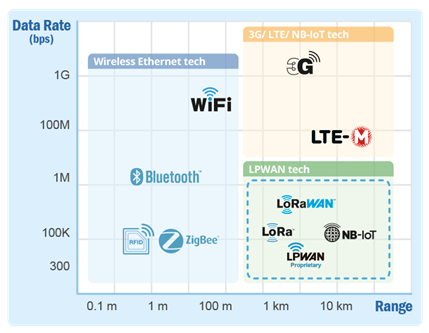
Figure 1: Comparison of Data Rate and Range of Various Wireless Communication Protocols (Source: Advantech)
- RFID: Radio frequency identification (RFID) uses radio waves to automatically capture and transfer data in real-time. Manufacturers can include RFID in cameras, GPS units, and smart sensors to help monitor and track objects. RFID is used for applications such as access control and facility monitoring, as well as tracking packages in buildings, factories, and the transportation industry.
- Wi-Fi: Wi-Fi is a wireless networking protocol based on the IEEE 802.11a/b/g/n specification. IoT devices that use 802.11b or g do so sparingly, as higher data transmission comes at the cost of high-power consumption. Wi-Fi is accordingly more suitable for devices that are connected to a power outlet. 11b can work independently or partner with cellular or other specialized protocols. However, Wi-fi has limitations in coverage and scalability.
- SmartMesh IP: A SmartMesh network provides redundant routing to the network gateway, as every node in the mesh network has identical routing capabilities. Channel hopping gives the SmartMesh IP network Five Nines (>99.999%) data reliability. Data traffic through a SmartMesh network is highly secure, with end-to-end encryption, message-integrity checking, and device authentication.
- LoRaWAN (Long Range Wide Area Network): LoRaWAN is a low-power, wide-area networking (LPWAN) protocol designed to wirelessly connect end nodes to the Internet. LoRaWAN devices are capable of transmitting signals over a long distance (15-20 km) and providing deep indoor coverage. With its minimal power consumption, the battery in a LoRaWAN device can last ten years. LoRaWAN supports energy-efficient, cost-effective, and secure bi-directional communication in IoT, M2M, and industrial applications.
- NB-IoT (Narrowband IoT): NB-IoT is used in M2M and IoT device applications. NB-IoT is a cellular, narrowband radio technology with a low bandwidth of 200 kHz. It is well-suited to devices that transfer tiny amounts of data and require a long battery life. NB-IoT has wide coverage, with concurrent strong signal quality on LTE networks.
- LTE-M: LTE-M is designed for IoT devices that connect directly to a 4G mobile network. LTE-M has higher data rates than LoRaWAN or NB-IoT at 1 Mbps, making it a better choice for products that require long-distance cellular access with high data rates. Compared to standard LTE, LTE-M is cheaper to implement because of its limited bandwidth. It consumes less power as it is optimized for low-data-rate devices running on small batteries.
The following table summarizes the differences between wireless technologies, including LoRaWAN, RFID, Wi-Fi, SmartMesh IP, NB-IoT (Narrowband IoT), and LTE-M:
| Technology | RFID | Wi-Fi | SmartMesh IP | LoRaWAN | NB-IoT | LTE-M |
|---|---|---|---|---|---|---|
 |
 |
 |
 |
 |
 |
|
| Maximum Distance | 10m | 100m | Indoor: 100m Outdoor: 300m |
20km | 1km (Urban) 10km (rural) from the base station | 1km (Urban) 10km (rural) from the base station |
| Data Rate | 40 kbps | 300 Mbps | 250kbps | 50 kbps | 50 kbps | 1 Mbps |
| Power Consumption | Low | Medium | Low | Low | Low | Medium |
| License - free | Yes | Yes | Yes | Yes | No | No |
| Security | EPC raw data transmission | Open system, shared key, legacy 8021X, WPA/WPA2 | Device authorization (3 levels) AES – 128bit Message integrity check | AES – 128 bit | 3GPP (128 – to-256-bit) | 3GPP TS 33, 401 (128 – to 256-bit) |
Table 1: Comparison of Wireless Communication Protocols
Enabling Long-Range IoT Networks with LoRaWAN
As shown in Table 1, LoRaWAN enables devices to communicate across long distances while consuming very low power. LoRaWAN devices may function on battery power for an extended period, generally several years, before they are replaced or recharged. This energy economy is critical for IoT deployments in inaccessible or remote places where frequent maintenance can be challenging. LoRaWAN is also cost-effective due to its use of unlicensed frequency bands. The absence of licensing fees and the ability to set up private LoRaWAN networks add to its low cost, making it an appealing solution for many IoT applications. Additionally, the spread spectrum modulation technology of LoRaWAN provides excellent interference resistance. This allows LoRaWAN to operate in congested sub-GHz bands while retaining the excellent signal quality and an assurance of stable connectivity for IoT devices.
LoRaWAN enables the use of wireless sensors, which offer several advantages over wired sensors in IoT applications:
- Easy Installation: Wireless sensors eliminate the need for extensive wiring, can be deployed quickly and easily, and allows flexible placement and reconfiguration as needed.
- Scalability and Flexibility: Wireless sensors offer greater scalability as they can be easily added or removed from the network without significant infrastructure changes.
- Mobility: Wireless sensors can be deployed in mobile or remote applications, such as asset tracking, transportation, or environmental monitoring.
I/O Modules are essential in managing and connecting wireless sensors in an IoT network. Multiple sensors can be managed if the following approaches are adopted using I/O Modules:
- Data Aggregation: I/O Modules can aggregate data from multiple sensors, and this consolidation of data simplifies data handling and processing at the gateway or cloud level.
- Addressing and Device Management: I/O Modules can assign unique identifiers (addresses) to each sensor. This enables easy identification, configuration, and monitoring of individual sensors within the network.
- Connectivity Protocols: I/O Modules support various connectivity protocols, including LoRaWAN, enabling seamless integration with the IoT network.
Advantech LoRaWAN Wireless I/O Modules
LoRaWAN Wireless I/O Modules make use of the LoRaWAN networking protocol for seamless communication between sensors and the IoT infrastructure. LoRaWAN is based on a star network topology; gateways are used for sending data between sensor nodes and the network server. Communication between sensor nodes and gateways takes place through a wireless channel using the LoRa physical layer, while communications between gateways and the central server are established through a backbone IP-based network. End nodes (sensors) in a LoRaWAN network typically consume low amounts of power and are battery operated (Class A and Class C). Figure 2 depicts a gateway receiving data and forwarding it to the cloud platform for processing, storage, and analysis.

Figure 2. LoRaWAN network architecture
Source: Advantech
Several specifications should be addressed when choosing a LoRaWAN Wireless I/O module:
- Data rate: the speed of data transmission through wireless communication
- Distance: the physical distance with which the protocol can reliably function. Wi-Fi I/O modules are preferable for indoor applications, whereas LoRaWAN I/O modules can communicate as far as 20 km in rural areas.
- Power consumption: the amount of power the device needs to run. Low power consumption is beneficial for devices that are battery-operated.
- Encryption: to keep the network secure and protect sensitive data, devices should support end-to-end encryption.
- Frequency: LoRaWAN runs on a wide range of frequency bands, with choices depending on area legislation and network compatibility. Check that the I/O module is compatible with the frequency range utilized in the specific deployment area.
Advantech, a leading supplier of industrial communication solutions, has introduced LoRaWAN I/O modules that feature wireless I/O sensor nodes based on LoRa network technologies.
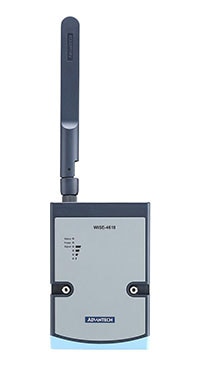
WISE-4610 Wireless I/O Module
Buy Now
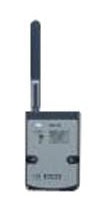
WISE-4610P Wireless I/O ModuleBuy Now
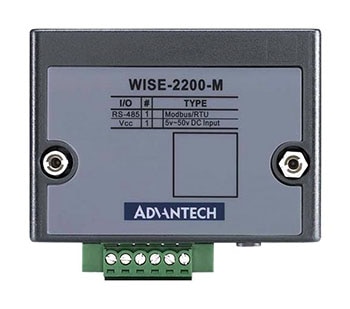
WISE-2200-M RS-485 ModBus I/O Module
Buy Now
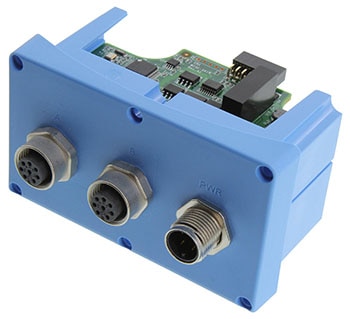
WISE-S614-A I/O Module, IP65
Buy Now
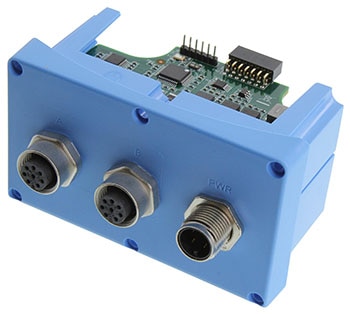
WISE-S672-A I/O Module, RS232, RS422, RS485
Buy Now
What applications might use LoRaWAN?
General Mining Wellfield Monitoring using LoraWAN
Advantech and PACE collaborated to design a solution for the monitoring of a number of mining wellfields. Each mining wellfield is equipped with pumps and extractors capable of being monitored via a central supervisory control and data acquisition (SCADA) system, which ensures safety and guard against abnormalities.
Ten WISE-6610-A100 high performance LoRaWAN gateways were installed at each wellfield. The wellfields' pumps, extractors, different sensors, and solar panels are connected to the PACE-supplied WISE-4610P wireless modular I/O. WISE-4610P terminal devices are IP65-rated and resistant against dust and moisture. They also have GPS support and are compatible with various I/O ports, including AI, DI, DO, PO, and RS-485. The WISE-4610P is directly connected to wireless sensors in the field, and transmits the data gathered to the Advantech WISE-6610 gateway, which forwards the data to the cloud. Data can also be sent to the customer’s SCADA system and monitored for safety incidents and abnormalities as shown in Figure 3.
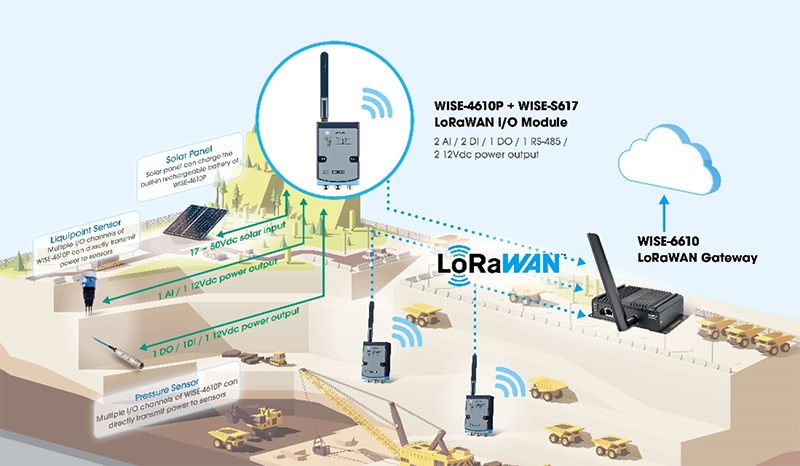
Figure 3: System Diagram of General Mining Wellfield Monitoring using LoraWAN
Accelerate Campus Energy Management using LoRaWAN
While installing air conditioning and solar panels in every school, a county in Northern Taiwan also introduced an Energy Management System in order to manage energy usage more efficiently.
Figure 4 depicts a block diagram of the EMS solution. A WISE-2200-M LoRaWAN RS-485 I/O module captures the data generated by the smart meters and sensors. This data is transmitted to a high-performance LoRaWAN gateway, the WISE-6610. The gateway then transmits the data to the UNO-2484G, an embedded automation computer located in the school’s administration office, which visualizes the data and interfaces with the school administration system. The compiled data is then uploaded to a private cloud solution at the education and power department servers, the WISE-STACK 200, for further data analysis.
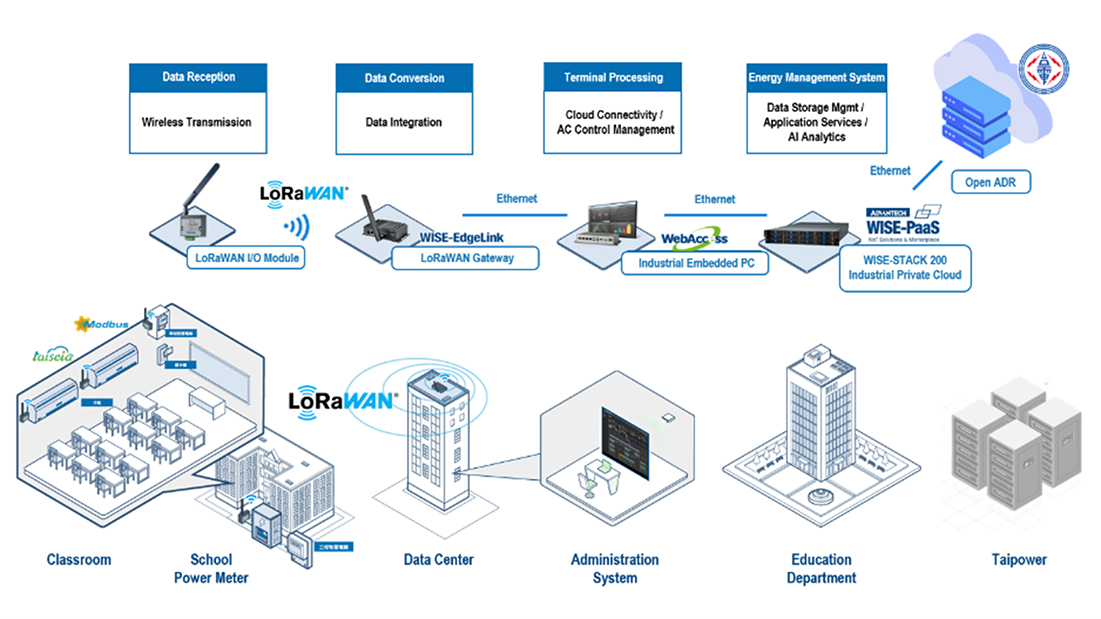
Figure 4: System Diagram of accelerated Campus Energy Management using LoRaWAN
In partnership with

Summing up: Wirelessly connecting the IoT with LoRaWAN
LoRaWAN is a low-power, wide-area networking protocol designed for long-range communication between devices and gateways in IoT applications. Because of its long range and low power consumption, LoRaWAN works well as a communications backbone in many IIOT systems. It enables the deployment of large-scale IoT networks for collecting and transmitting data from a wide range of sensors and devices. Advantech provides secure and reliable solutions for building a LoRaWAN network, with components such as I/O modules and gateways, as well as automation computers and private clouds.
With the availability of technologies like LoRaWAN, what types of long distance wireless applications are you interested in building?
Please tell us in the Comments section below.
